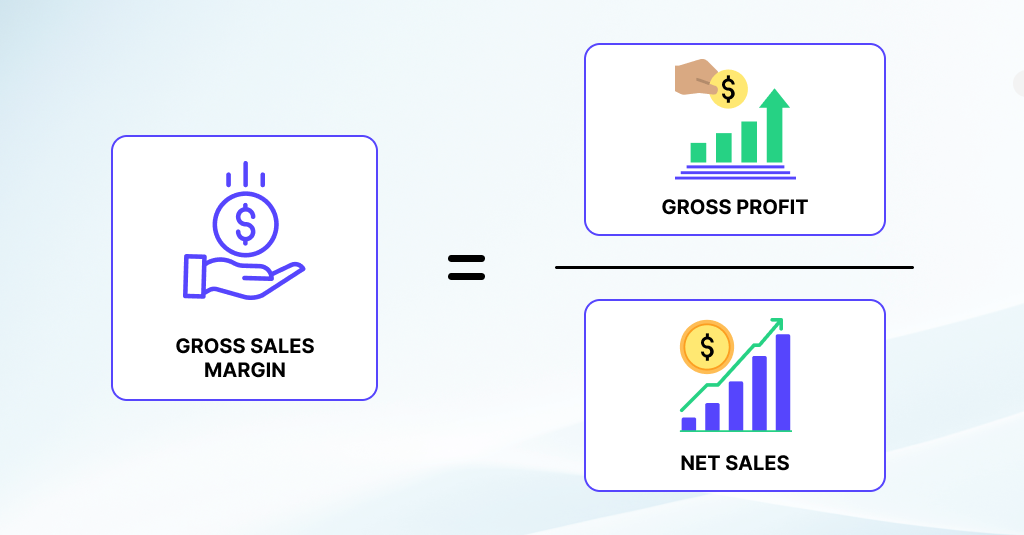What is Gross Sales Margin?
The Gross Sales Margin represents the difference between a company’s sales revenue and the cost of goods sold (COGS). It is a key financial metric that indicates how efficiently a company is producing and selling its products or services.

Gross Sales Margin Calculation
Gross Sales Margin is calculated using the formula:

Gross Sales Margin Components
Sales Revenue: This is the total amount of money generated from selling goods or services before any costs or expenses are deducted.
Cost of Goods Sold (COGS): This includes all direct costs associated with producing the goods or services sold by the company, such as raw materials, labor, and manufacturing overhead.
The Importance of Gross Sales Margin
Profitability Assessment: It helps in evaluating the basic profitability of a company’s core activities. A higher margin indicates that the company is retaining more revenue after covering the cost of goods sold, which can be reinvested into the business or contribute to net profit.
Cost Management: Businesses can identify areas where they can reduce costs or improve efficiency in production and operations.
Pricing Strategy: It provides insights into whether the pricing strategy is effective. If the margin is too low, it might suggest that the prices are too low or the costs are too high.
For Travel Agencies and Booking Platforms
The Gross Sales Margin typically ranges from 10-15%. This percentage reflects the highly competitive nature of the industry and the relatively thin margins on travel-related services. The margin can be influenced by various factors such as:
Commission Structures: Travel agencies often earn commissions from airlines, hotels, and other service providers. The margin can vary depending on these commission rates.
Operational Efficiency: How well the agency manages its operations and controls costs can significantly impact the margin.
Market Conditions: Economic conditions, seasonal variations, and changes in consumer behavior can affect sales revenue and costs, thus impacting the margin.
Example
Imagine a travel agency that generates $1,000,000 in sales revenue and has a COGS of $850,000. The margin would be calculated as follows:

This means the agency retains 15% of its revenue after covering the cost of the services sold, which it can use to cover other expenses, invest in growth, or realize as profit.
Conclusion
Understanding the Gross Sales Margin helps businesses make informed decisions about pricing, cost management, and overall financial strategy, ensuring long-term sustainability and profitability.







